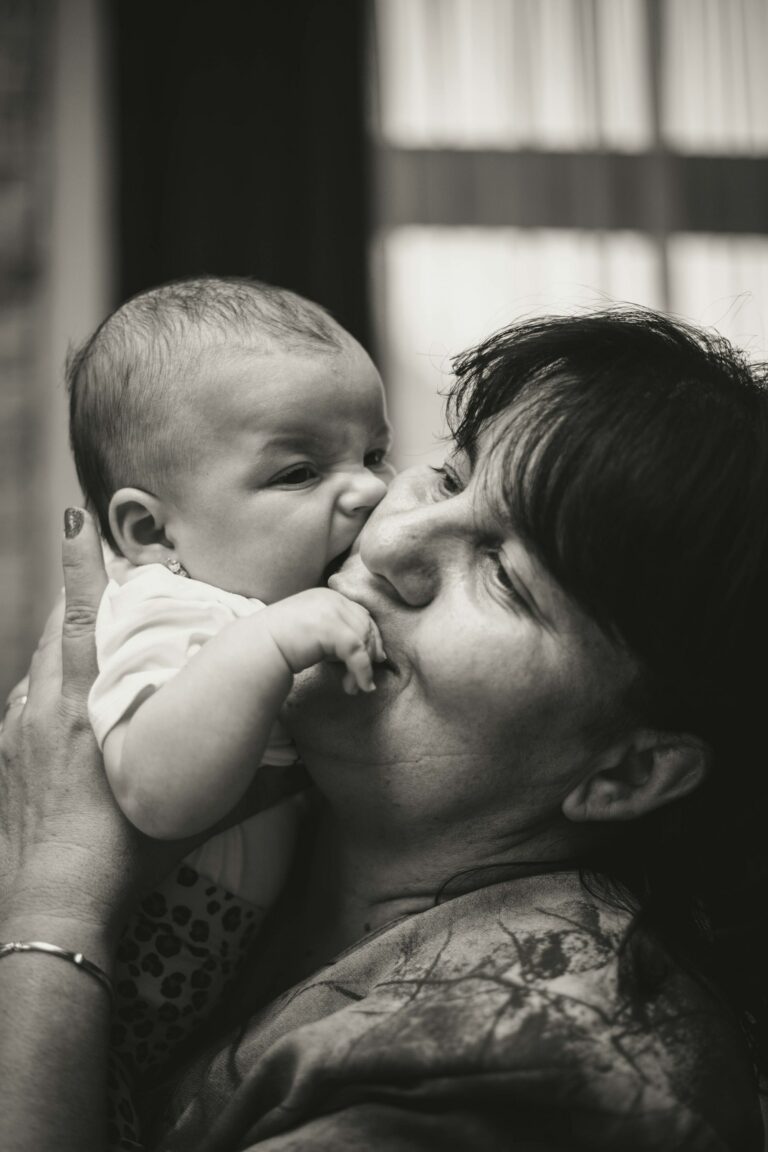The journey with a 4 month old baby is an exhilarating blend of discovery, fatigue, joy, and at times, bewilderment. Many parents oscillate between delight at each new giggle and concern over what might be “normal” for this phase. Why does sleep seem to unravel just when you were starting to feel confident? How much growth is genuinely expected, and when does that next pediatrician visit become more than a routine check? Exploring these questions—understanding patterns of feeding, sleep, play, physical changes, social bonds, and potential warning signs—can transform anxiety into informed confidence. If you ever catch yourself wondering, “Is my 4 month old baby supposed to do that?”—you are in the right place for scientific clarification, reassurance, and practical tips that truly respect your unique experience.
Physical development: growth patterns and movement
Growth and body changes
A 4 month old baby is usually growing at a remarkable pace—many pediatricians reference growth charts at each check-up to track this journey. You might notice that your baby gains about 1.3 pounds (600 grams) monthly, measuring around 24–25 inches (60–65 cm) in length. The head circumference increases, mirroring robust brain expansion. Monitoring these numbers helps spot any deviations early, but “one size fits all” rarely applies—variance is entirely common. Wondering if your baby is thriving? Count wet and soiled diapers; they can quietly confirm that nutrition is on the right track.
Gross and fine motor milestones
At this age, the coordination of a 4 month old baby takes center stage. Head and neck control become strikingly more stable, a direct sign of strengthening cervical and upper back muscles. “Tummy time” catalyzes this process—think of it as baby’s daily workout, powering up everything from upper body to core. During these moments, many babies begin to push up using forearms or, daringly, try a mini-roll from belly to back. A few, ahead of schedule, might surprise you with the reverse roll. Curious about upright skills? Brief supported standing can reveal nascent leg strength, but solo sitting will remain elusive for now—support stays essential.
Fine motor skills undergo a subtle revolution, too. Now, hands are more than accidental passengers; they’re on a mission. A 4 month old baby reaches for dangling toys, explores with fingers, and brings everything (sometimes relentlessly) to the mouth. This combination of hand-eye coordination, object exploration, and mouthing is a sign of neural wiring firing as expected. Choose safe, lightweight toys that stimulate both tactile and oral curiosity.
Vision and sensory integration
Visual acuity sharpens dramatically. A 4 month old baby can track moving objects horizontally and vertically, especially those with high-contrast patterns or bright colors—hence the favored black-and-white mobile or bold rattles. Babies begin distinguishing faces with increasing interest, following you with their gaze, and turning toward the origin of sounds. Simple household items—a hand mirror or smoothly rolling ball—encourage this vital visual tracking. Auditory curiosity grows as well: your baby reacts to your laughter or sudden dog bark, learning to connect sights and sounds.
Cognitive and language development: new ways of interacting
Inside your baby’s head, billions of neural connections are forming every second. Recognition of familiar faces and voices becomes distinct; a smile reserved for someone special is now more than a reflex, it’s evidence of attachment. Ever notice your 4 month old baby concentrating fiercely as they attempt to bat at a mobile or attempt to mimic a sound? These are early cognitive problem-solving attempts—tiny experiments in cause and effect.
When it comes to language development, cooing, babbling, and subtle vocal play become part of daily life. Babies often mimic the pitch and rhythm of your voice, laying down critical building blocks for later speech. Routine chatter, songs, and exaggerated expressions aren’t just entertaining—they’re integral to teaching tone and meaning. You might hear a new repertoire: from joyful squeals to low grumbles, your baby is orchestrating a more nuanced emotional symphony.
Social and emotional growth: building bonds and self-awareness
True social smiles take over—no longer a simple reflex, these are intentional, brimming with personality. A 4 month old baby locks eyes with caregivers, searching for feedback and affection. Recognition of familiar faces versus newcomers grows sharper. If you catch your baby staring intently at themselves in a mirror, you’re witnessing the budding seeds of self-awareness.
Their emotional palette expands too: beyond crying, you’ll detect delight, frustration, and curiosity. Laughter might erupt during peek-a-boo, while a sudden startle might give way to wide-eyed surprise. Early social games—simple back-and-forth expressions and “conversations”—fuel brain development while fostering deeper bonds. Repeated exposure to gentle touch, consistent affection, and face-to-face play creates the foundation of trust and emotional security.
Play, stimulation, and everyday routines
What does a “good day” look like for a 4 month old baby? Typically, short periods of alertness separated by frequent naps, interspersed with feeding. During awake times—usually 1.5 to 2 hours at a stretch—prioritizing sensory-rich activities can supercharge development.
Tummy time remains king for muscle development. Complement it with engaging objects: soft rattles, textured books, or activity mats with dangling elements. Bold, contrasting colors and safe mirrors attract attention and prompt hand-eye coordination. Placing toys just out of reach can encourage those first experimental reaches and rolls. Consider this an ongoing experiment—what fascinates on Monday might bore by Friday, and a little novelty goes a long way.
Mix up positions: alternate between belly, back, and gentle supported carrying. Establishing simple, repetitive routines—like a pre-nap lullaby or evening bath—introduces essential predictability, supporting both security and healthy sleep cycles.
Growth, nutrition, and feeding
A 4 month old baby relies exclusively on breast milk or iron-fortified infant formula for nutrition; 5–6 feedings in 24 hours are typical, but “on demand” feeding remains most physiologically attuned to your baby’s needs. On average, daily intake hovers between 24–32 ounces, but individual variation can be significant. Vigilant for hunger signals (rooting, hand-sucking) and cues of fullness (turning away, slowed sucking) ensures optimal intake.
Solid foods? Most medical guidelines recommend holding off until about 6 months. However, some babies begin showing signs of readiness earlier—excellent head control, ability to sit with support, and keen interest in watching adults eat. Always consult a pediatrician before introducing solids early. If cleared to start, only minimal amounts of iron-rich purees (like fortified baby cereal or finely pureed meats) should be trialed—one new food at a time.
All exclusively breastfed infants require 400 IU of daily vitamin D supplementation, to prevent deficiency and support bone growth. Formula-fed infants usually don’t need supplementation unless intake is low.
Sleep patterns, routines, and the not-so-mythical sleep regression
A 4 month old baby may sleep between 12 to 15 hours, usually consolidated into nighttime stretches and two or three daytime naps. Many parents soon encounter the fabled “4 month sleep regression”—a developmental blip where sleep cycles fragment, night-waking spikes, and naps become erratic. This upheaval, typically spanning 2–6 weeks, coincides directly with dramatic brain maturation and physical milestones like rolling. The temptation to change everything is understandable, but maintaining consistent bedtime rituals—dim lights, gentle rocking, white noise—will gradually help sleep settle back into a stable rhythm.
Why does sleep remain fragile? Babies at this age drift between “REM” (active) and “NREM” (deep) sleep more frequently—hence the sudden wake-ups or shortened naps. Prevent over-tiredness with regular naps and pay attention to sleep cues (yawning, eye-rubbing).
Safe sleep practices are non-negotiable. Always place baby on their back, on a firm sleep surface, free from toys, loose bedding, or pillows. Room sharing (not bed-sharing) significantly reduces the risk of sudden infant death syndrome (SIDS). Consider using a pacifier if your baby accepts it easily—it has a proven protective effect, though forcing is unnecessary.
Health checkups, vaccines, and diaper care
The pediatrician appointment for a 4 month old baby is more than a box-ticking routine. Growth measurements (weight, length, head circumference) are plotted against evidence-based percentiles. Objective assessments like muscle tone, head control, social smiles, and auditory tracking are methodically recorded. Immunization usually includes follow-ups of DTaP, Hib, IPV (polio), PCV, and rotavirus. This visit is also prime time for parents to raise questions—about fussiness, sleep backsliding, or feeding issues.
Diaper rash is a frequent visitor around this stage—immature skin, prolonged moisture exposure, and sensitive pH all play a role. Effective prevention strategies include:
- Changing diapers every 2–3 hours, or as soon as soiled.
- Using fragrance-free wipes or simply water and cotton.
- Allowing for diaper-free periods to let skin breathe.
- Applying a zinc oxide-based barrier ointment after each change.
Persistence or worsening of rash warrants medical review; sometimes, a secondary infection or atopic dermatitis (a type of eczema) could be complicating the issue.
Safety: adapting the environment
Have you noticed your 4 month old baby trying to scoot or roll unexpectedly? This sudden burst of activity means “babyproofing” becomes more than just a future task. Sweep floors for choking hazards, anchor furniture, use outlet covers, and stow away cords. Maintain ultra-clean feeding items and toys to reduce infection risk. Hand hygiene before and after every interaction, especially for visitors or siblings, can sharply decrease the incidence of common colds and viral illnesses.
Parenting support and managing doubts
Raising a 4 month old baby is as demanding as it is rewarding. Facing fatigue, uncertainty, or parental guilt? These feelings coexist with wonder and are completely valid. Streamlining daily routines is helpful—think: a consistent nap schedule, short walks, or pausing for a soothing swaddle during restless moments. If feeling overwhelmed, connection (be it with family, friends, or online communities) can provide comfort and perspective.
Medical guidance remains paramount. If something about your baby’s behavior, feeding, or sleeping feels worrisome, your instincts are an invaluable early warning system—professional advice is always available.
Signs that require rapid attention
While most 4 month old babies follow a winding but healthy developmental course, stay alert for red flags:
- Persistent difficulty tracking objects visually
- Lack of social smile, or absence of engagement with familiar people
- Limited arm or leg movements, persistent limpness, or poor ability to grasp
- No cooing, squealing, or vocal experimentation
- Inability to hold head steady when upright
- Feeding refusal or steadily poor weight gain
- Lethargy, unresponsiveness, or abrupt loss of previously gained skills
Prompt pediatric assessment can lead to early intervention and improved outcomes.
Preparing for upcoming milestones
What’s next? The coming months will reveal more refined rolling, attempts to sit with support, exploratory babbling, and even a growing enthusiasm for solid food. Each 4 month old baby progresses at an individual tempo—focus on encouragement, gentle play, and celebrate every “first,” large or small. Move forward with curiosity, patience, and an openness to adaptation—no two children follow the exact same script.
Key takeaways
- A 4 month old baby develops rapidly—expect major leaps across physical, cognitive, and social domains.
- Tracking growth, routine health checks, and open communication with your care provider lay the foundation for well-being.
- Sufficient tummy time, sensory-rich play, and consistent sleep routines are cornerstones of healthy development.
- Vitamin D supplementation and iron-rich nutrition at the right moment can profoundly impact future health.
- Safe sleep practices and an evolving, babyproofed home environment shield against preventable risks.
- If uncertainty or worry arises (about milestones, feeding, or sleep), seeking help is wise, not worrisome; timely support matters.
- Celebrate this exciting, fleeting stage, and remember—every connection, every soothing word, every song sung at bedtime, shapes the secure foundation of a lifetime.
For ongoing support, remember that resources and professional guidance are always within reach. Personalized health tips and free screening tools tailored to your child are available—explore the Heloa app for extra guidance every step of the way.
Questions Parents Ask
How can I tell if my 4 month old is teething?
It’s common for babies to start showing early signs of teething around 4 months, though the first tooth may appear a bit later. You might notice more drooling than usual, increased desire to chew on hands or toys, and perhaps some fussiness. Gums may look slightly swollen or sensitive. Rassurez-vous, these changes are perfectly natural. Offering a clean, cool teething ring and extra cuddles can bring comfort. If you’re unsure or notice a fever or persistent discomfort, you can always seek advice from your healthcare professional.
What are signs of developmental delays in a 4 month old?
Every baby grows at their own rhythm, but certains signaux appellent à plus d’attention. If your little one doesn’t respond to loud sounds, has trouble moving arms or legs equally, shows no interest in reaching for objects, or isn’t smiling socially, il importe d’en parler avec un médecin. N’hésitez pas à consulter si un doute persiste, même léger. Early support makes a big difference and seeking clarification is always a good idea.
Is it normal for my 4 month old to wake frequently at night?
Yes, frequent night waking at 4 months is very common and often linked to growth spurts or new developments. Your baby’s brain and body are changing rapidly, which peut bouleverser les cycles de sommeil habituels. Rassurez-vous, cette phase est temporaire. Sticking to gentle routines and creating a calm sleep environment can help your baby—and you—feel secure. If night waking is impacting your well-being, talk with your pediatric team; together, you’ll find strategies that fit your family’s needs.

Further reading:









